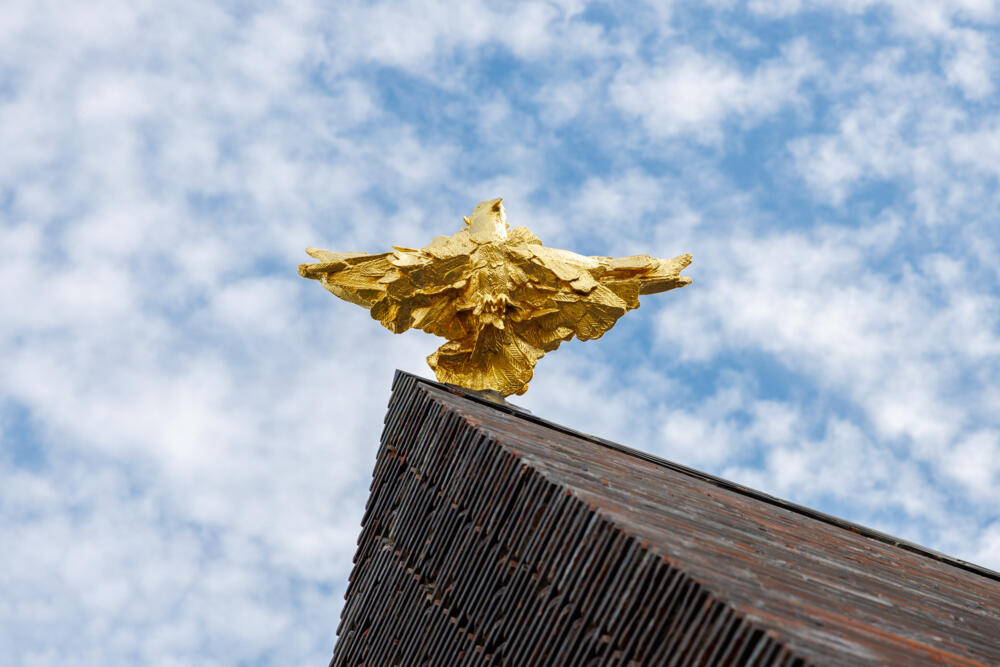Kiki Smith is more concerned with the existential questions of being human than almost any other contemporary artist. Many of her works are inspired by Christian iconography and religious narratives. The historical collections of the Diözesanmuseum, for example, with their paintings, sculptures and countless objects of popular piety, hold a great fascination for her. "I have a theory that Catholicism and art go well together because they both believe in the physical manifestation of the spiritual world - that you have a spiritual life through the material world...", she says. When she herself transforms an image of reflected light into a textile fabric, she transforms the immaterial into the material. Kiki Smith thus links her Marian mantle with other Catholic relics and miraculous textiles such as the Shroud of Turin, the Veil of Veronica and the Virgin of Guadalupe.
As a child, the reflected light of the moon made her see God as the sun and people as its reflection: "I always thought, oh, I want to be like the moon. I want to be ... the evidence on earth." The moon has an enormous attraction for her, "but it's also just one of the most beautiful things you can see in the night sky," says Kiki Smith, comparing it to the Virgin Mary: "She's something you can talk to. The sun is more cruel, you can't look it in the eye, whereas you can confide all your longing, prayers, sadness and everything else to the moon."
"Maria breit den Mantel aus" is one of the best-known Marian hymns (first printed version around 1640): "Maria breit den Mantel aus / Mach Schirm und Schild für uns daraus; / Laß uns darunter sicher stehn, / bis alle Stürm' vorbeigehn." (Text version by Joseph Hermann Mohr, 1891). Kiki Smith has repeatedly dedicated herself to this figure: "I am a great fan of the Virgin Mary. I grew up as a Catholic. Many of my works refer to the Virgin Mary. I've done many versions and reworked them in different ways." Kiki Smith's famous sculpture Virgin Mary from 1992 spreads out her arms because she is ready to embrace everything. She stands for this open compassion that envelops us, but which we can also see as a model for our behavior in the world, says the artist. In her understanding, Mary's mantle encompasses the whole of heaven and all the heavens and includes everything that is given to us. Mary asks us and challenges us to wrap ourselves in her mantle and extend ourselves through compassion and acts of radical empathy. In offering her mantle, Mary encourages us to join her in her unconditional love for all sentient beings. Just as she is transformed through her suffering into a figure of hope, she asks us to wear her mantle and transform ourselves.










